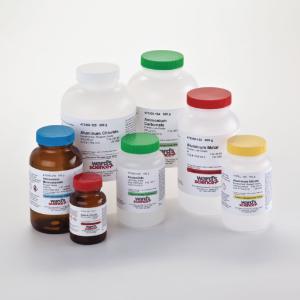Make money burn by firing up this combustion science activity
Middle school/High school
Here’s a high-octane chemistry demo that will get your students fired up. If you’re a teacher with some money to burn (oxymoron, anyone?), there’s no better way to demonstrate combustion and enthalpy of reaction than with this easy and engaging burning money chemistry experiment.
If Ray Bradbury's novel Fahrenheit 451 is on their reading list, students will recognize this temperature as paper's ignition point. When regular paper is set on fire, we all know what happens next – poof, and it’s gone! But, what happens when paper – such as a dollar bill – is pre-treated with a simple solution with a low combustion temperature before igniting?
Using this activity, students will explore just that as the currency appears to catch fire and the chemical reaction unfolds. Any dollar bill will do, but you can up the ante – and the dramatic effect – with higher denomination bills.
What makes this experiment so hot? Let’s look at some science behind these thermal concepts.
How does combustion function?
In the simplest terms, combustion just means the burning of things. Combustion reactions are simply reactions where a fuel reacts with oxygen to produce heat, light, and a byproduct, which is usually an oxide compound.
Enthalpy of reaction (aka heat of reaction) - enthalpy is a concept used in science and engineering when heat and work need to be calculated. When a chemical reaction happens, a substance can become warmer or colder. As a result, heat will flow to things around it, or from things around it, until its temperature is the same again.1 If the pressure stays the same, this amount of heat tells how much the enthalpy changed.
Endothermic - reactions with a positive enthalpy change are called endothermic, meaning that they absorb heat (cooling their surroundings). Students who do this activity will observe that the water evaporates as the alcohol burns. As the water-alcohol mixture evaporates, it absorbs much of the heat energy that's generated when you ignite the bill. The water is first heated to its boiling point and then vaporized by the heat of combustion from the burning alcohol.2 The evaporation of the water keeps the paper's ignition point below Farhenheit 451.
Fun Fact: Of course, any paper will do for this activity, but the composition of U.S. currency is about 75% cotton and 25% linen (regular paper is made of wood pulp mostly). When dipped into the water-alcohol mixture, all that cotton soaks up that water fast, leaving much of the alcohol sitting on the surface due to its higher vapor.
Exothermic - reactions with a negative enthalpy change are called exothermic, meaning they release thermal energy to their surroundings. Combustion is always an exothermic process.3 The fire itself in the Money to Burn activity is exothermic as it gives off thermal energy.
While they're on the subject, you can engage students in lessons about the impact burning fuels has on greenhouse gases in our atmosphere. Most greenhouse gases caused by humans come from burning fossil fuels—coal, hydrocarbon gas liquids, natural gas, and petroleum—for energy use.4
Download the Money to Burn activity above to help students explore combustion, chemical reactions, enthalpy of reaction, and flammability. We all can be relieved that the heat energy from the chemical reaction is transferred to the water molecules instead of the cash. Now the dollar bill can burn a hole in your pocket until it's time for lunch.
References: 1. Enthalpy Facts for Kids | KidzSearch.com 2. SICK Science stevespanglerscience.com 3.Socratic.org Q&A l Chemistry 4. U.S. Energy Information Administration
Recommended products
[StartProductBlock]

Isopropyl Alcohol
[EndProductBlock]
[StartProductBlock]
Ward's® Essentials Endothermic Reactions Lab Kit
Monitor and graph temperature change in an endothermic reaction and create a cold pack, which utilizes an endothermic reaction. A visual explanation of an exothermic reaction.
[EndProductBlock]
[StartProductBlock]
Ward's® Essentials Exothermic Reactions Lab Kit
Monitor and graph temperature change in an exothermic reaction and create a heat pack, which utilizes an exothermic reaction.
[EndProductBlock]
[StartProductBlock]
Ward's® Chemistry Exothermic and Endothermic Reaction Demonstrations
Exothermic and endothermic reactions are safely carried out inside a plastic bag so students can pass the bag around and feel the reaction results.
[EndProductBlock]
[StartProductBlock]
Ward's® Chemistry Determination of the Enthalpy Change of a Chemical Reaction Lab Activity
Uses chemical solutions and Hess's Law. Students monitor the reactions in a calorimeter and analyze the data, calculating each reaction's enthalpy and writing the net ionic equations.
[EndProductBlock]
